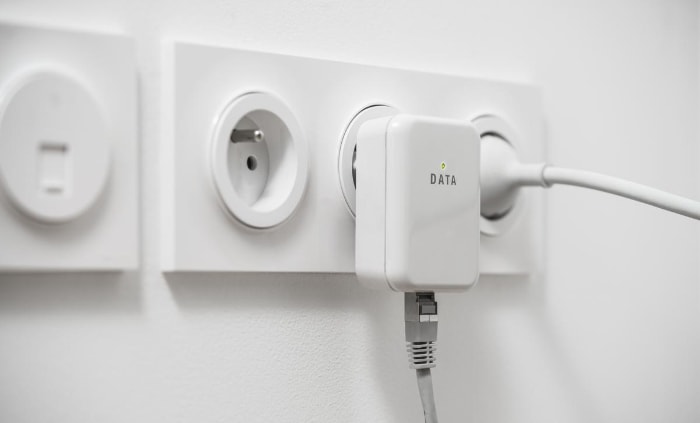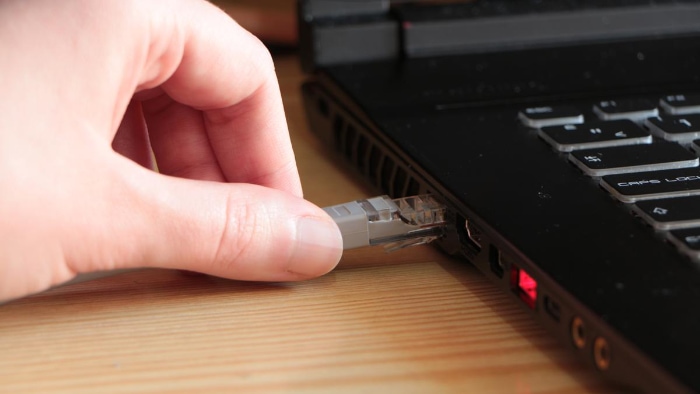Powerline Adapters vs. Ethernet: Choosing the Right Path

The digital age has seen an explosive growth in the need for fast, reliable network connections. Whether it’s for online gaming, streaming high-definition video, or simply browsing the internet, a stable connection is essential to fully enjoy these experiences.
Two prominent solutions exist to enhance our network connectivity: powerline adapters and Ethernet cables.
Both powerline adapters and Ethernet cables aim to provide users with stable and speedy internet access. While they serve the same purpose, their methodology, setup, and efficiency can greatly vary.
Unraveling the Mysteries of Powerline Adapters
Powerline adapters are ingenious little devices that let you carry your internet connection over the electrical circuit in your home or office. They come in pairs; one is connected to your router and plugged into a power socket, and the other is plugged into another socket in the area where you want to extend your network.
The internet signal is then carried over the electrical wires in between. It’s almost like having a long Ethernet cable running from your router to your device, but without the clutter!
When Are Powerline Adapters Most Beneficial?
Powerline adapters are a fantastic solution in situations where WiFi doesn’t reach certain areas of your home or office, or when the WiFi signal strength is weak. They are also great for devices that don’t have WiFi capabilities but do have an Ethernet port, such as some smart TVs and gaming consoles.
Different Types of Powerline Adapters
Powerline adapters come in a variety of shapes and sizes, with differing features and capabilities. Some basic models simply extend your wired network, while others have built-in WiFi to extend your wireless network as well.
More advanced models might even offer multiple Ethernet ports, integrated sockets, or MIMO technology for faster speeds and better performance.
Pros and Cons of Powerline Adapters
Convenience and Ease of Use: Powerline adapters are incredibly easy to install – just plug and play. There’s no need to drill holes or run long Ethernet cables around your property.
No New Wiring Needed: As they utilize your existing electrical wiring, there’s no need for additional cabling. This is especially beneficial in rented properties where you might not be allowed to make changes.
Limitations in Speed and Stability: While powerline technology has come a long way, it can still struggle to match the speed and stability of a good Ethernet connection, especially over long distances or through certain types of electrical circuits.
Interference and Range: Some devices and circuits can cause interference that affects the performance of powerline adapters. In addition, their effectiveness can decrease over longer distances.
Decoding the Intricacies of Ethernet Cables
Ethernet cables are the bedrock of wired internet connections, providing a fast and reliable means of transmitting data between devices in a network. They connect devices like computers, routers, and switches, enabling them to communicate and share data.
Inside these cables, there are multiple pairs of copper wires which carry data signals.
When Are Ethernet Cables Most Beneficial?
Ethernet cables are the go-to choice when you want the most stable and fastest internet connection, unaffected by the issues that can plague WiFi, such as signal strength, interference, and range. They are ideal for activities that require high bandwidth and low latency, like online gaming, video editing, and streaming high-definition media.
Different Types of Ethernet Cables
Ethernet cables come in different categories, each offering different speed and performance capabilities. These include Cat5e, Cat6, Cat6a, and Cat7, among others.
The key differences lie in their data transfer speeds, maximum range, and the frequency at which they can transmit data.
Pros and Cons of Ethernet Cables
Stability and Speed: Ethernet cables offer the highest level of stability and speed compared to other connection methods. They are capable of transmitting data at speeds of up to 10 Gbps (with Cat6a and higher), and the connection is highly reliable with minimal packet loss.
Not Affected by Interference or Range: Unlike WiFi and powerline adapters, Ethernet connections are not affected by physical obstacles, electromagnetic interference, or range (up to their maximum rated length).
Installation Complexity: Installing Ethernet cables can be more complex than other solutions. It might involve drilling holes, running cables through walls or ceilings, and ensuring they are safely and neatly installed to avoid tripping hazards or damage.
Aesthetics and Practicality of Running Cables: Having cables running around your property might not be the most aesthetically pleasing solution. It can also be impractical in larger properties or in situations where you need to connect multiple devices in different rooms.
The Showdown: Powerline Adapter vs Ethernet

Having comprehensively explored the individual attributes of powerline adapters and Ethernet cables, it’s time we bring them head to head.
Speed and Reliability Comparison
While both powerline adapters and Ethernet cables can deliver solid internet connections, the latter usually offers superior speed and stability. Ethernet cables, especially modern ones like Cat6a and Cat7, can deliver speeds up to 10 Gbps, far exceeding the capabilities of most powerline adapters.
However, the actual speed of both will often depend on your internet plan and how your home or office is set up.
Installation Comparison
Powerline adapters take the trophy for ease of installation. The simple ‘plug and play’ design makes them an attractive option for those who want a quick and hassle-free setup.
On the other hand, Ethernet cables require more effort to install, potentially involving drilling holes and running cables through walls, but this one-time effort can provide a more reliable and higher-speed connection.
Cost Comparison
In terms of cost, both powerline adapters and Ethernet cables can vary greatly depending on the brand, features, and specifications. Basic powerline adapters can be more affordable than high-quality Ethernet cables, but high-end powerline adapters with advanced features can also come with a higher price tag.
It’s important to consider both your budget and your needs when deciding between the two.
Range and Limitations Comparison
Ethernet cables offer stable performance over their maximum rated length, which can be up to 100 meters for standard Ethernet cables. However, physical obstructions can make running the cable this length impractical in many cases.
Powerline adapters, while offering a simpler installation, can be affected by the electrical wiring in your home and other devices that may introduce electrical noise, reducing their effectiveness over longer distances.
Navigating the Choice: The Best Option for Different Scenarios
Different scenarios call for different connectivity solutions. Here, we’ll dive into various use cases and suggest which option – powerline adapter or Ethernet cable – could be the most suitable in each scenario.
Best for Large Homes or Offices
When dealing with larger properties, running Ethernet cables can become a complex task, especially when you need to connect multiple devices in different rooms. Here, powerline adapters, particularly those with built-in WiFi, can offer a more convenient solution to extend the network coverage without the need for extensive wiring.
Best for Small Apartments
In smaller apartments or spaces, Ethernet cables can be a fantastic choice. Given the limited space and proximity to the router, you can enjoy the highest possible speeds and most stable connection that Ethernet cables provide without dealing with complex installation or extensive cabling.
Best for Gaming or High-Bandwidth Activities
For gamers or professionals involved in high-bandwidth activities such as video editing or 3D modeling, Ethernet is typically the preferred choice. The high data transfer speed and stable connection provided by Ethernet cables offer a seamless and lag-free experience that is crucial in these scenarios.
Best for Normal Home Use and Streaming
For regular internet users who mainly browse the web, stream videos, and use social media, either option can work well. However, powerline adapters might offer a good balance between speed, cost, and ease of installation.
This is especially true in multi-story homes where WiFi signal might not reach all areas effectively.
Conclusion
As we’ve seen throughout this exploration, both powerline adapters and Ethernet cables have their unique strengths and potential drawbacks. While Ethernet cables often provide superior speed and reliability, powerline adapters offer a convenient and flexible solution, especially in situations where running new cables is impractical or undesired.
The decision between using a powerline adapter or an Ethernet cable ultimately comes down to your individual requirements. Consider your specific network needs, the size and layout of your property, the nature of your internet usage, and your budget.
For some, the unparalleled stability and speed of Ethernet will be worth the effort of installation. For others, the convenience and ease of setup offered by powerline adapters will tip the scales in their favor.
The technological world is not one-size-fits-all, and the diversity of options is a testament to that fact. By understanding the fundamental workings and strengths of both powerline adapters and Ethernet cables, you can make an informed choice that best fits your lifestyle and needs.
Remember, a well-connected home or office is key to unlocking a world of digital possibilities. So, whether you’re an avid gamer, a work-from-home professional, or simply a digital enthusiast, choosing the right connection type is an important step towards optimizing your digital experience.


